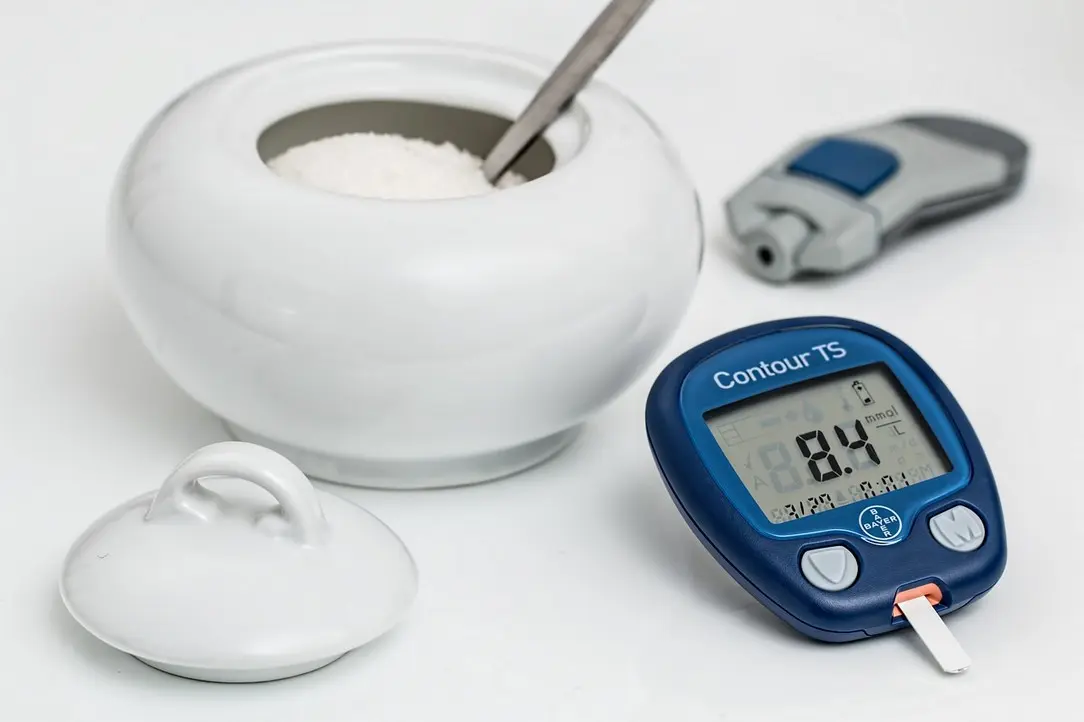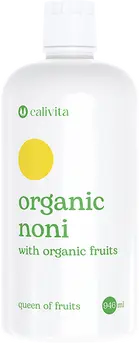Organic Noni and low activity inflammation
Published by Calivita Partner in Super Fruits · 20 November 2023
Tags: organic, noni, inflammation, diabetes, insulin, resistance, atherosclerosis
Tags: organic, noni, inflammation, diabetes, insulin, resistance, atherosclerosis
Inflammation or inflammatory response is the stereotypical, complex, developmentally acquired ability of living organisms to respond to various damage, the symptoms of which are: erythema (redness), tumor (swelling), inflammation (heat), tenderness (pain) and functio laesa (impaired function) . In the case of chronic metabolic diseases such as type 2 diabetes or obesity, similar mechanisms and signaling molecules are used at the cellular level as in classic inflammation, but the above symptoms do not occur. For these chronic conditions, the designation "low grade inflammation" or chronic inflammation has therefore been proposed.
The role of adipose tissue in inflammation
Adipose tissue has been shown to play a significant role in low-activity inflammation. The relationship between excessive accumulation of adipose tissue and the development of insulin resistance or type 2 diabetes has been known for a long time, however, knowledge about the mutual dependencies was provided by a study of clinical cases of lipodystrophy, i.e. a condition in which lipodystrophy (congenital or acquired), significant dysfunction of adipose tissue or is completely absent ( lipoatrophy).
The apparent paradox - inflammation and insulin resistance
People affected in this way suffer from severe insulin resistance with all the usual symptoms, including type 2 diabetes. These are therefore identical disorders commonly found in the condition associated with chronic nutrient excess - obesity.
This apparent paradox can be explained by the ability of adipose tissue to properly process the flow of nutrients, i.e. store lipids in a situation of their increased (but not permanent) supply and release them in the process of lipolysis (breakdown of fats accumulated in fat cells).
In the case of complete absence of adipose tissue (lipoatrophy) or reduction of its function and quantity (lipodystrophy), it is obvious that the body has lost this "absorptive" ability of adipose tissue, and lipids are deposited in other tissues, where they significantly interact with intermediate metabolism and participate in the development of insulin resistance.
How does obesity relate to insulin resistance and diabetes?
In obese people, the situation is different: chronic excess energy leads to a gradual increase in the volume of fat cells (adipocytes), and only after reaching a certain critical level of fat cell size, preadipocytes are activated and proliferated and new fat cells are formed.
It has been proven that the larger the fat cell, the greater the insulin resistance and the possibility of developing diabetes.

Cytokine production in mild inflammation
Chronic, mild inflammation is characterized by increased production of a number of cytokines (protein substances that interact with cells and transmit information) from adipose tissue, especially TNF-α, IL-6, IL-1, IL-8, while cytokine production anti-inflammatory adiponectin and leptin is reduced.
Macrophages, which are physiologically present in adipose tissue, are responsible for the production of these cytokines and are recruited to a greater extent to adipose tissue during the development of obesity.
Macrophages in adipose tissue are concentrated mainly around large, hypertrophic, dying or dead fat cells.
Changes in cellular metabolism
An important role in the process of cell death of overgrown fat cells is played by a phenomenon called "endoplasmic reticulum stress". This intracellular organelle performs a fundamental function in protein synthesis.
An excess of nutrients is one of the factors causing an increased demand on the endoplasmic reticulum in fat cells. Part of the response to this stress is extensive changes in cell metabolism that can lead to cell death.
The emergence of insulin resistance, what are its causes?
At the current level of knowledge, the emergence of insulin resistance due to the pro-inflammatory state of the body can be summarized in the following sequence of events: excess nutrients and insufficient physical activity lead to hypertrophy of fat cells and impaired insulin sensitivity of target tissues, especially muscles.
Hypertrophied fat cells, and thus altered adipose tissue, additionally cause a mild pro-inflammatory state through the production of inflammatory cytokines and higher levels of free fatty acids released during lipolysis in fat cells.
As the disease progresses, there is an increase in macrophages in the adipose tissue, macrophages are called to the adipose tissue precisely to eliminate the dying fat cells.
These macrophages produce low-intensity pro-inflammatory substances and lead to insulin resistance. This creates both basic conditions for the development of type 2 diabetes.
Atherosclerosis, what are its causes and link to inflammation?
Since chronic mild inflammation is one aspect of abdominal obesity, it is likely that sustained exposure to inflammatory cytokines from macrophages leads to the development of atherosclerosis.
Higher levels of circulating amyloid (the part of the protein that is deposited in the intercellular space during disease states) have been found in obese patients.
Therefore, some authors place obesity, diabetes and Alzheimer's disease at least indirectly. Diseases associated with this type of inflammation include atherosclerosis, diabetes, thrombosis, myocardial infarction, stroke, metabolic disorders, and dementia.
Organic Noni is a new organic noni with organic fruits
 Morinda citrifolia (called noni in Polynesian languages) is a unique exotic fruit that contains a number of important substances, amino acids, vitamins and minerals. Noni fruit reduces inflammatory processes in the body and supports healthy cell activity and cell proliferation. Calivita Organic Noni is further enhanced with the triple effect of organic pomegranate, organic cherries and organic grapes added to the organic noni giving the product an intense fruity flavor. The Organic Noni product comes from certified organic farming.
Morinda citrifolia (called noni in Polynesian languages) is a unique exotic fruit that contains a number of important substances, amino acids, vitamins and minerals. Noni fruit reduces inflammatory processes in the body and supports healthy cell activity and cell proliferation. Calivita Organic Noni is further enhanced with the triple effect of organic pomegranate, organic cherries and organic grapes added to the organic noni giving the product an intense fruity flavor. The Organic Noni product comes from certified organic farming.Organic Noni Calivita is a unique product that contains juice from noni fruit, white grapes, cherry fruit and pomegranate. All of these fruits work synergistically to reduce the production of inflammatory cytokines, thereby inhibiting chronic inflammation and preventing cell damage. 1 serving (30 ml) contains: 23900mg of organic Noni fruit juice (Morinda citrifolia), 3200mg of organic white grape juice concentrate (Vitis vinifera), 2200mg of organic cherry juice concentrate (Prunus avium), 1300mg of organic fruit juice concentrate pomegranate (Punica granatum).















